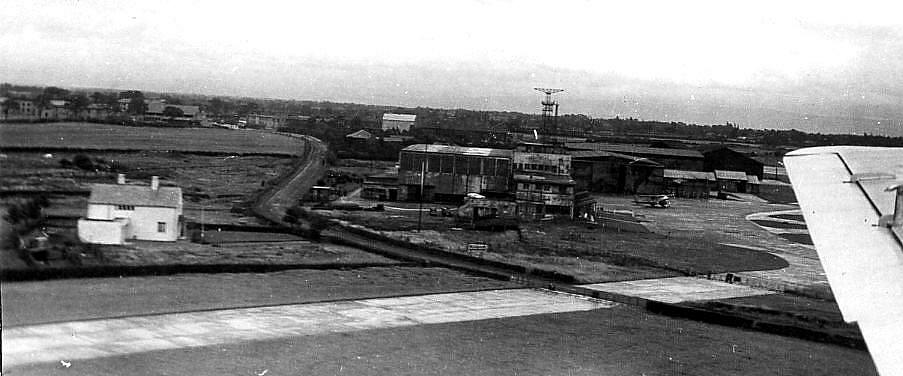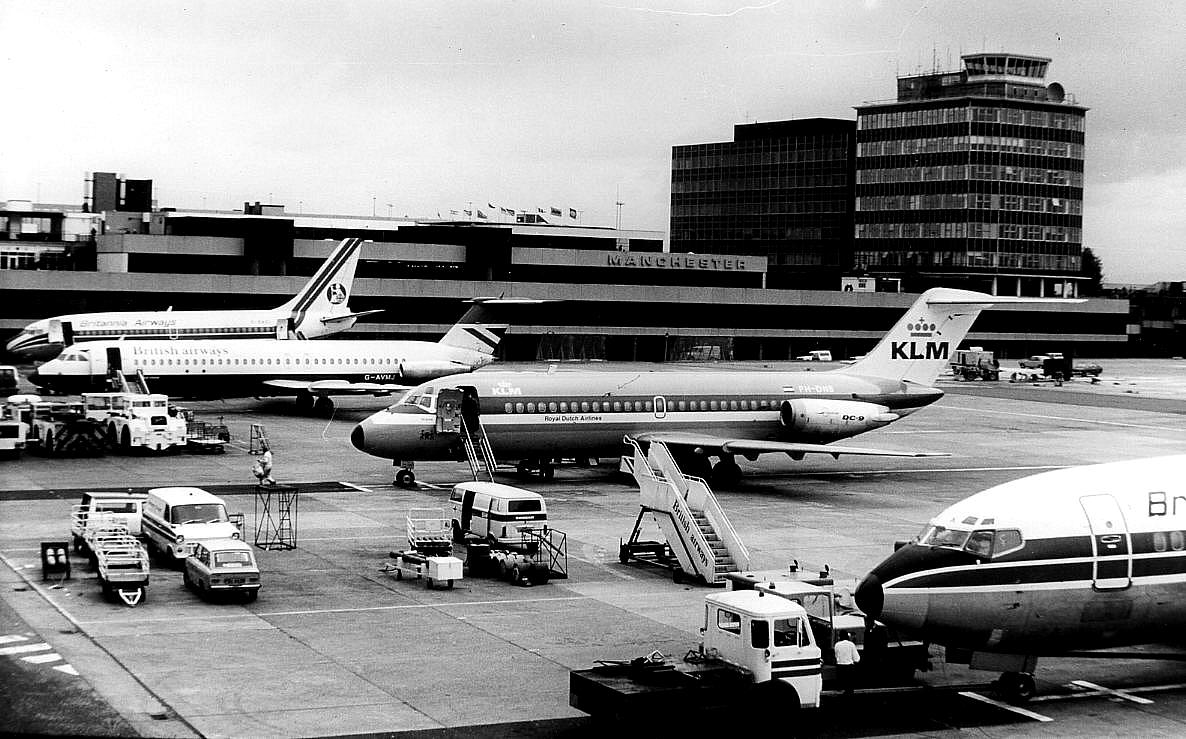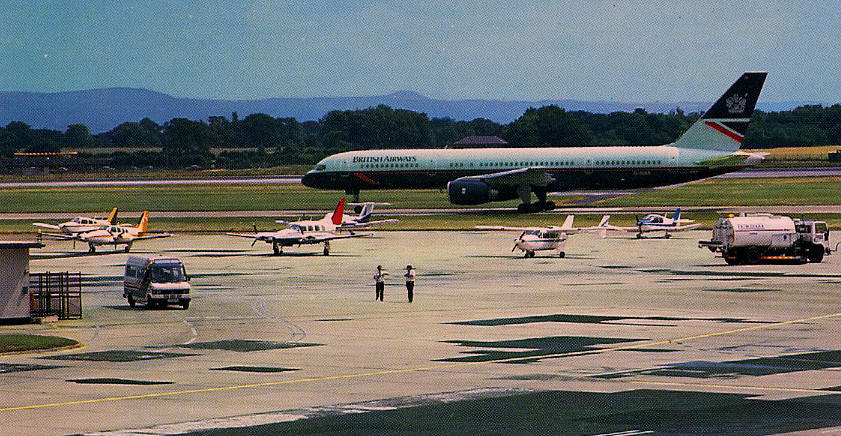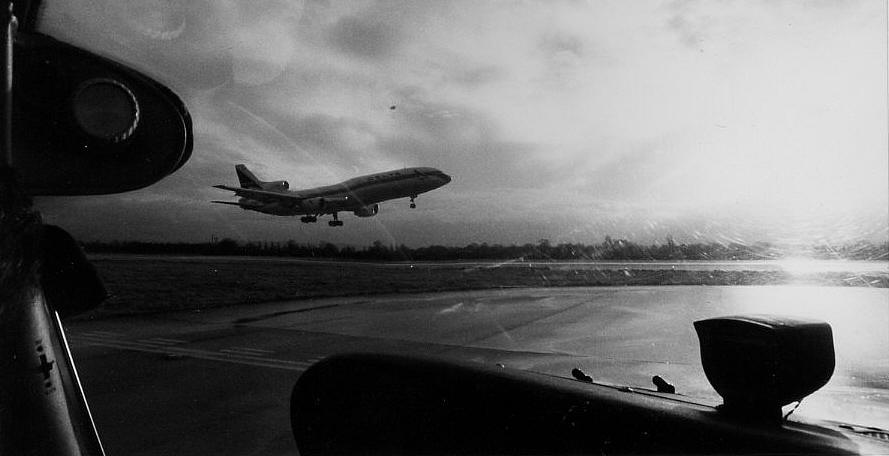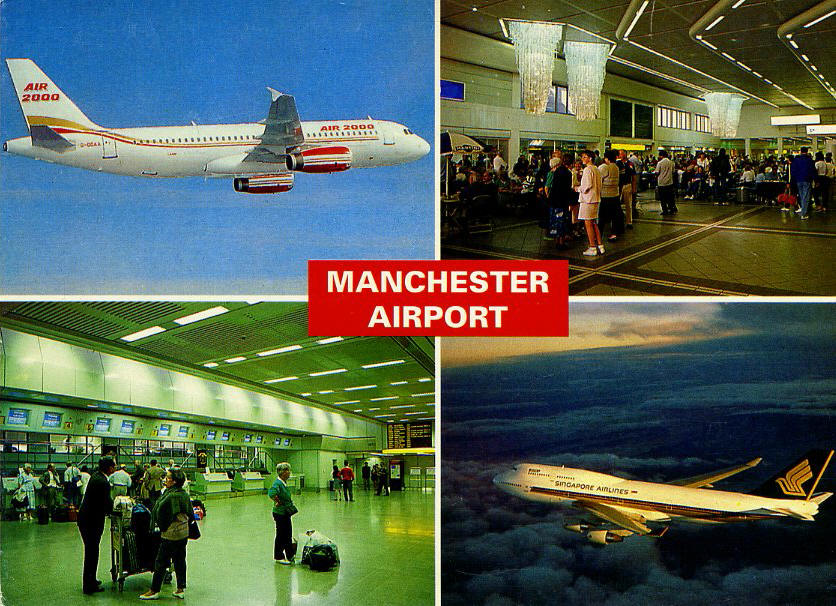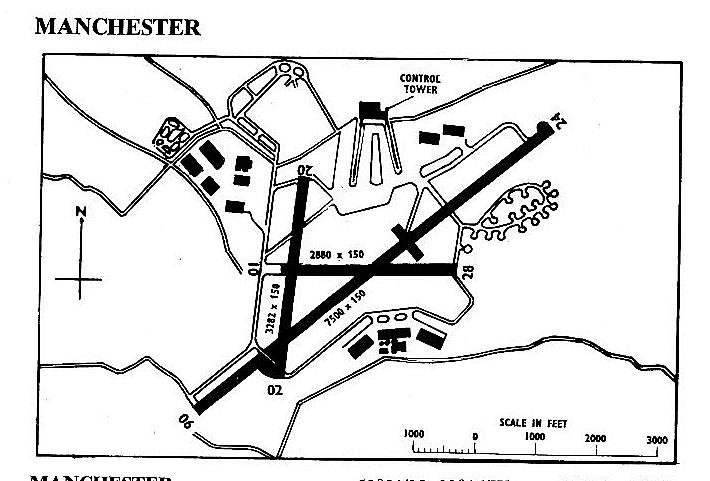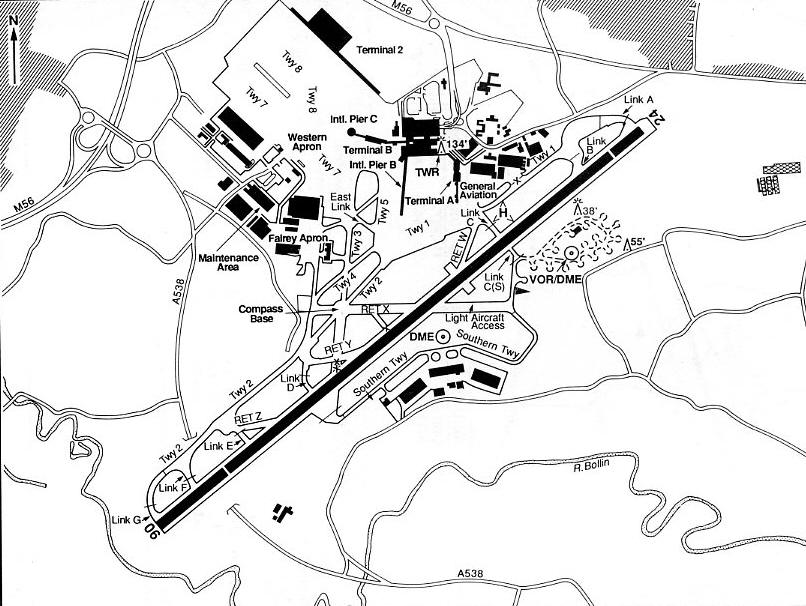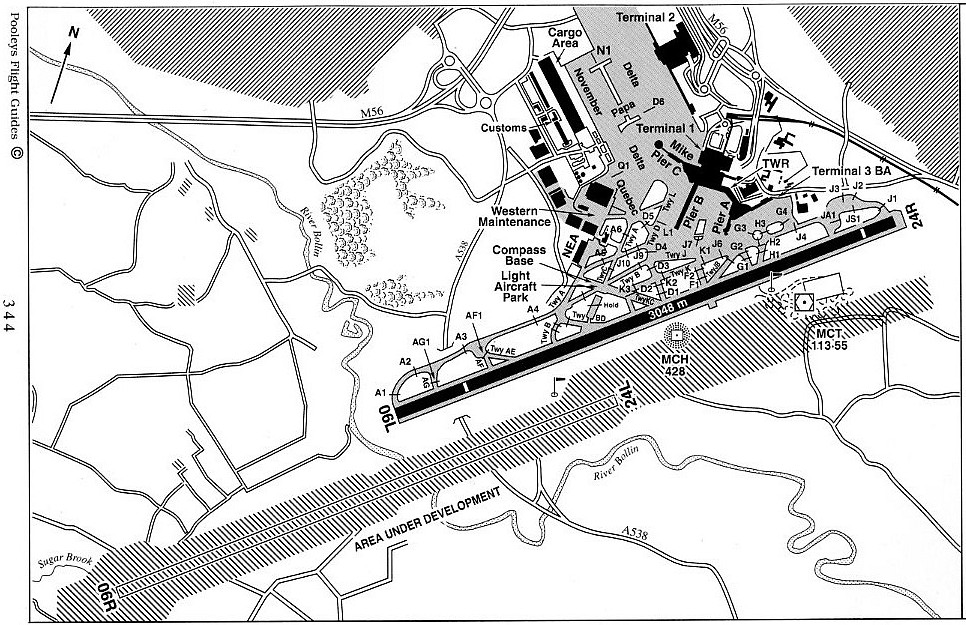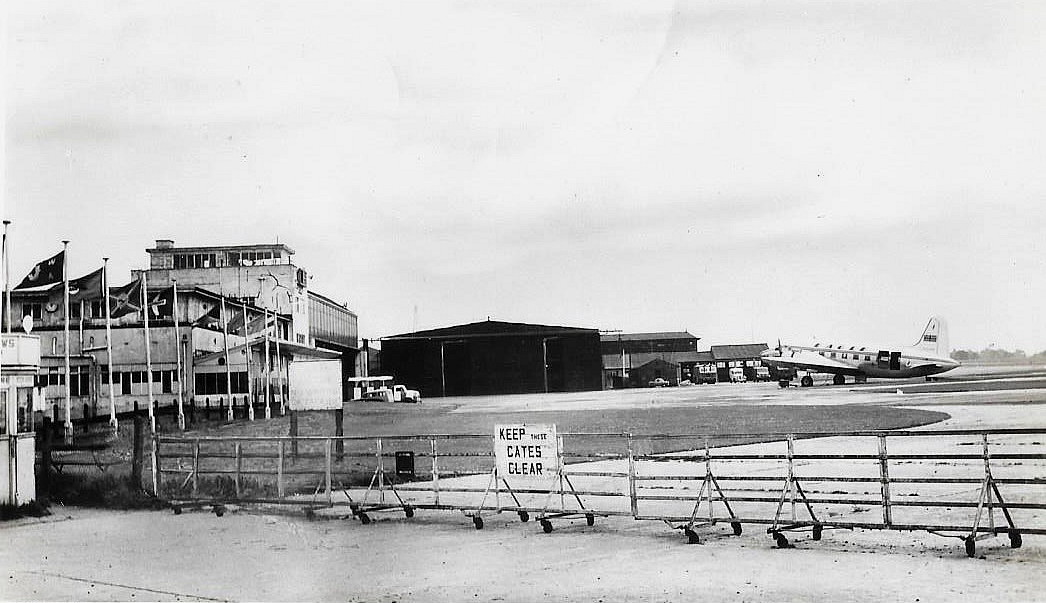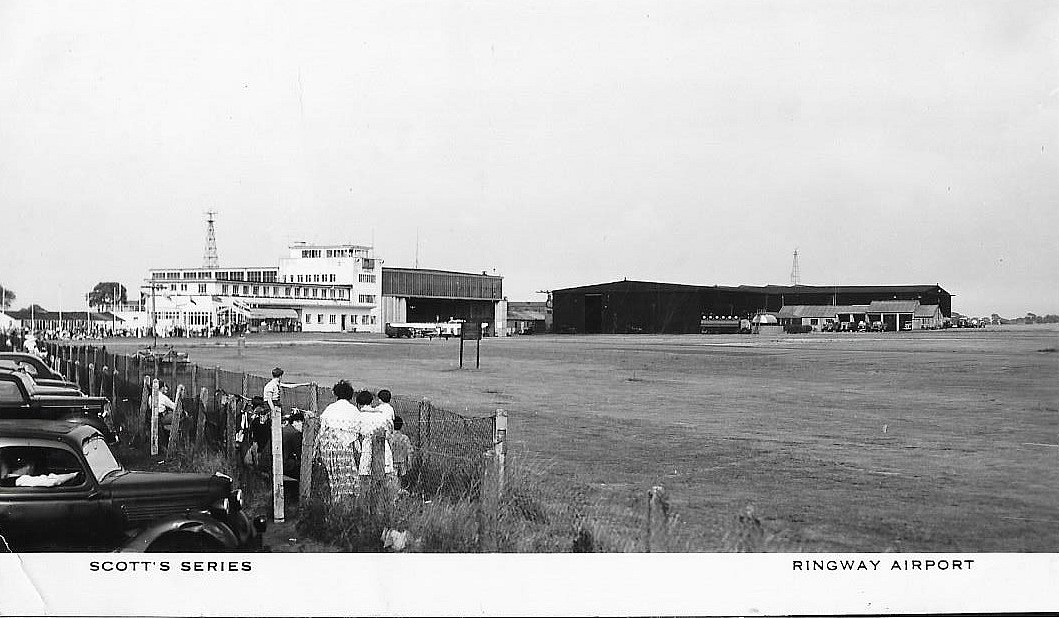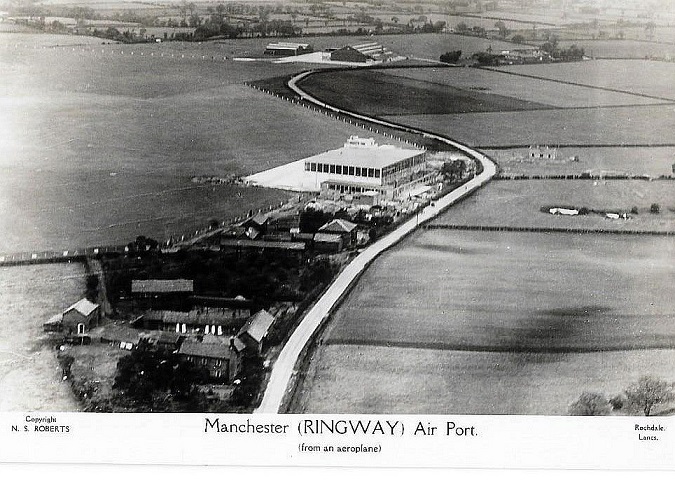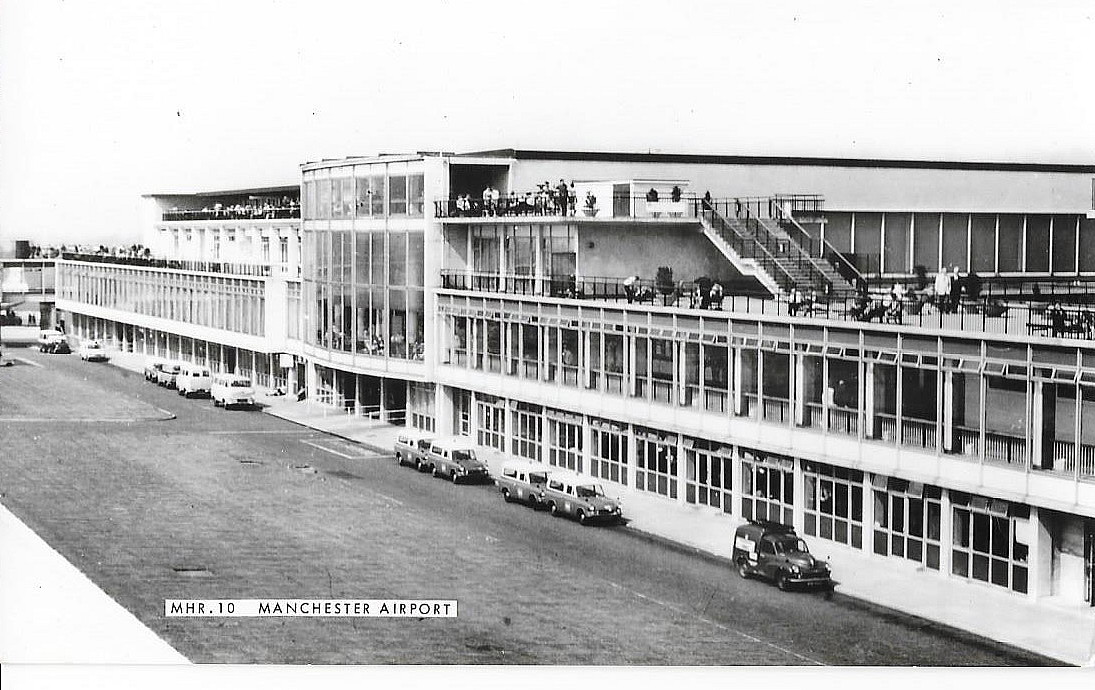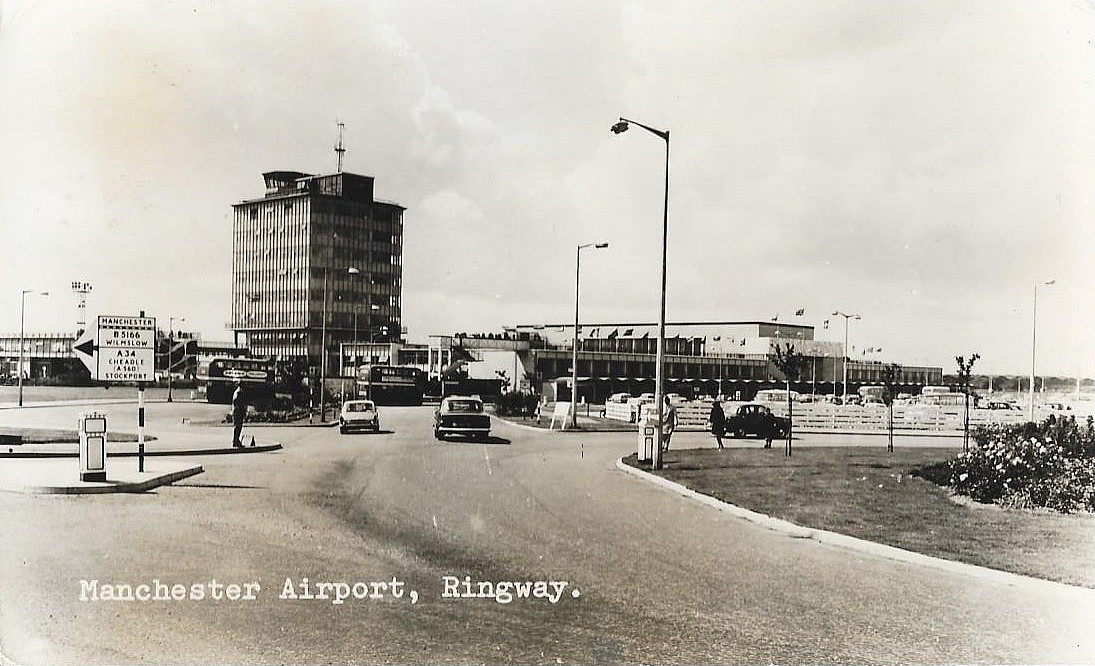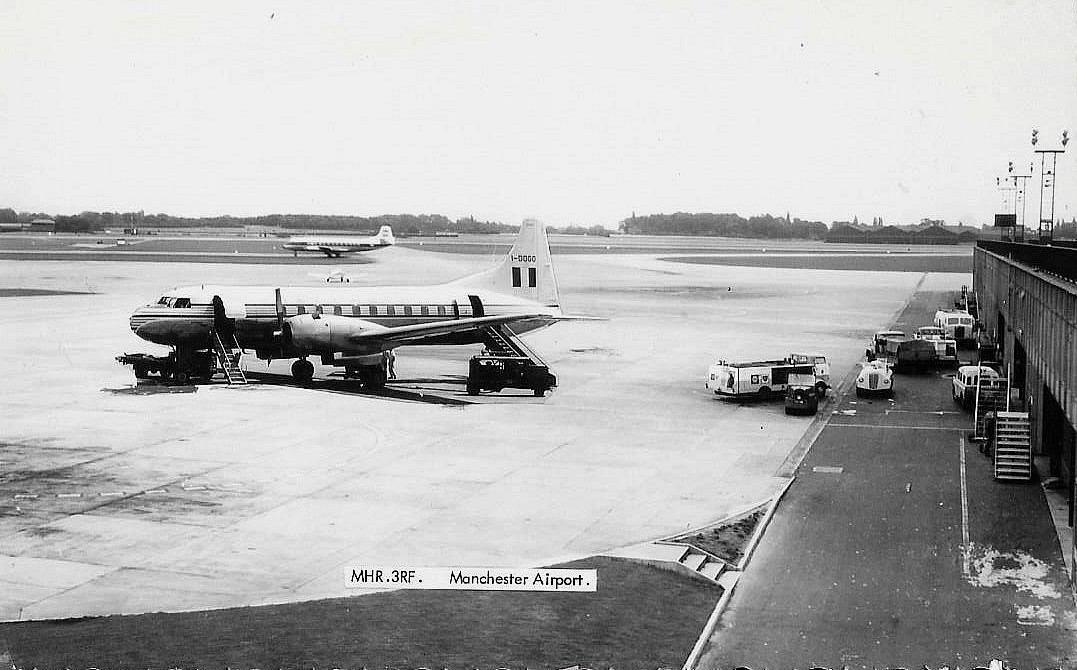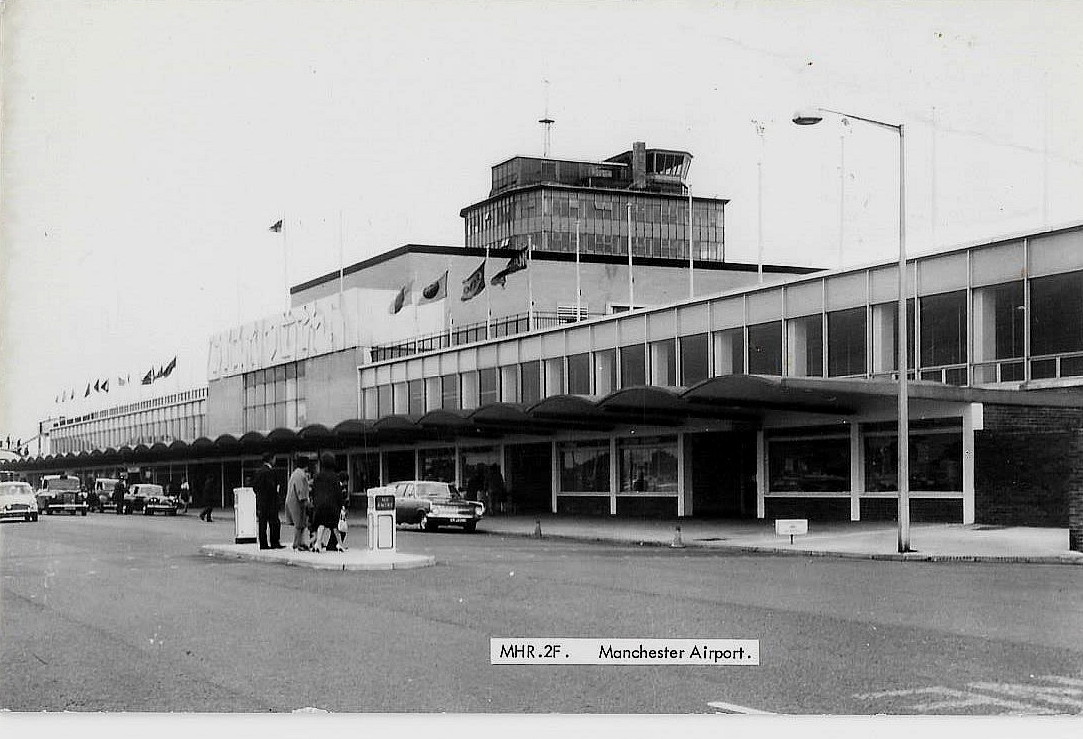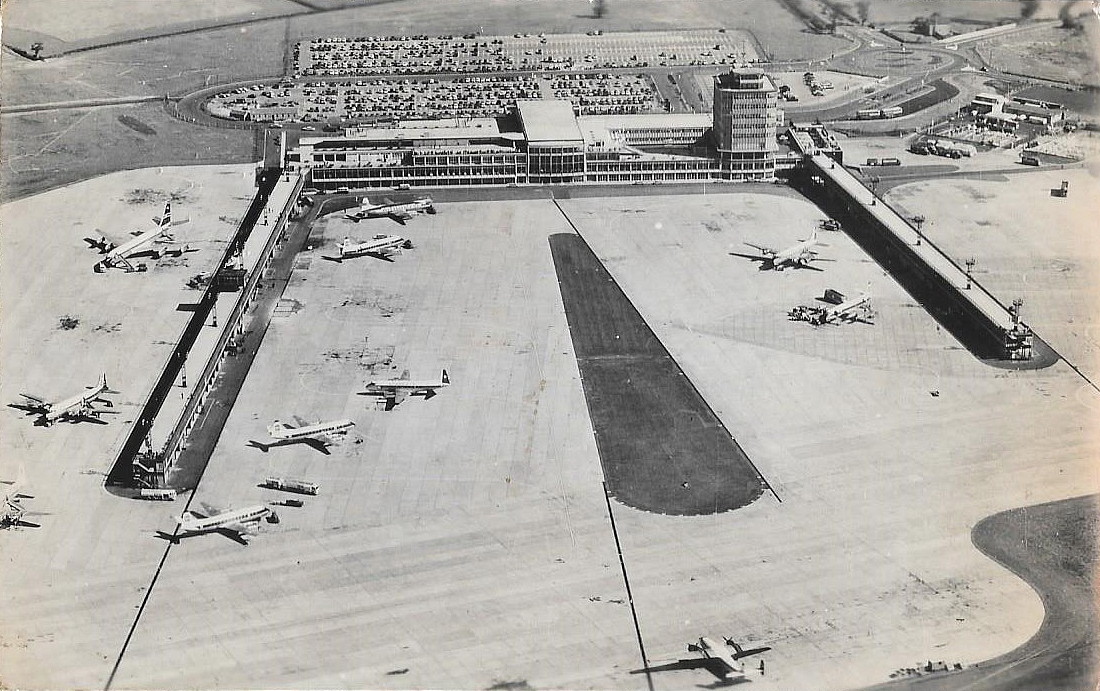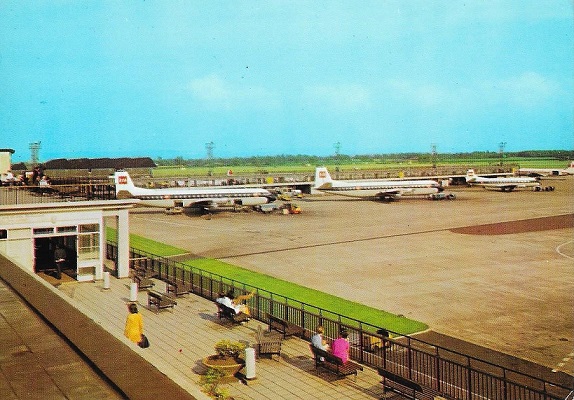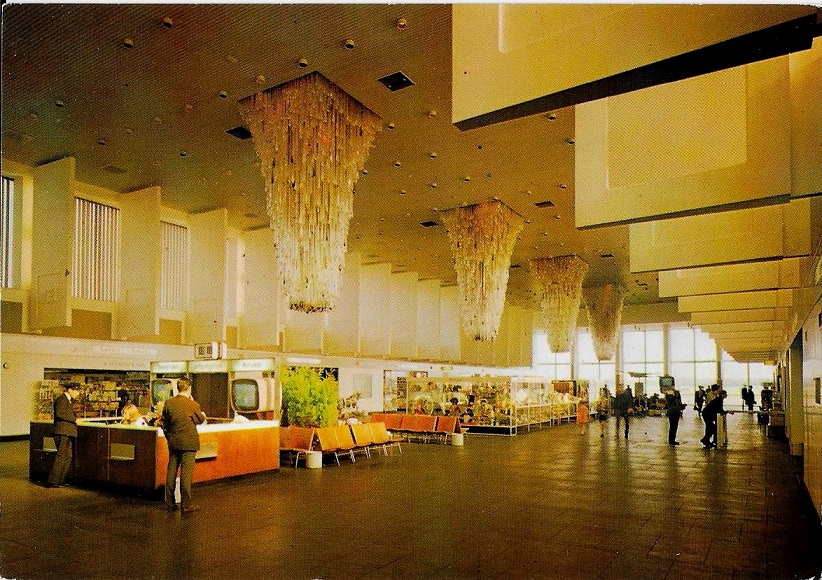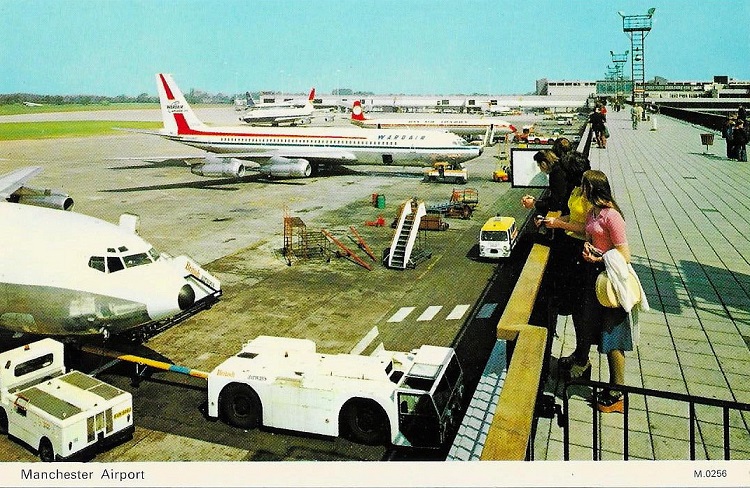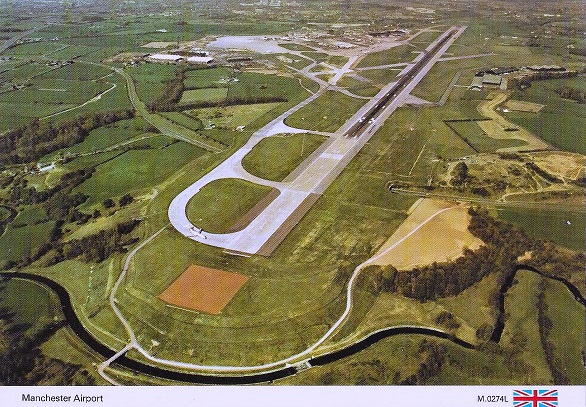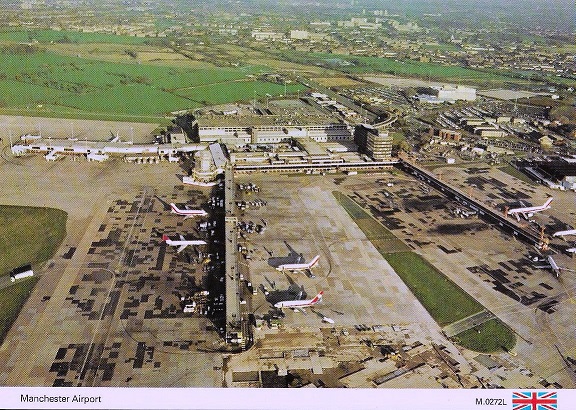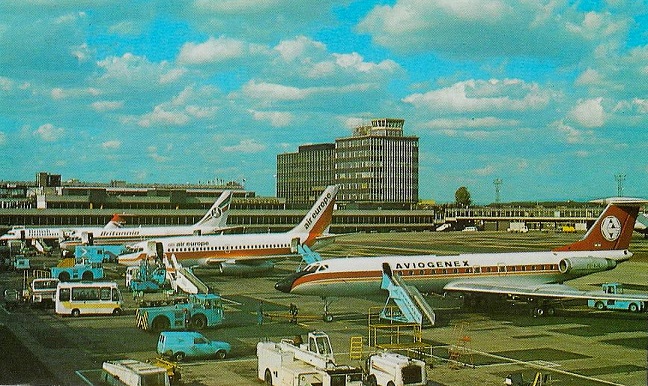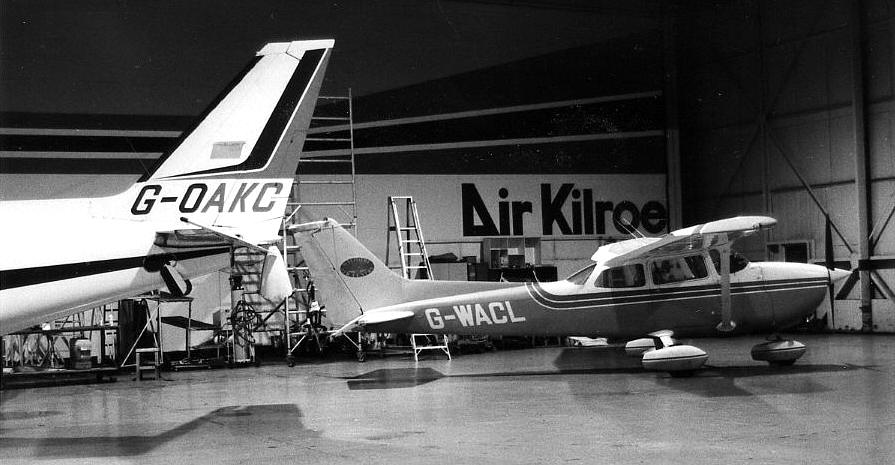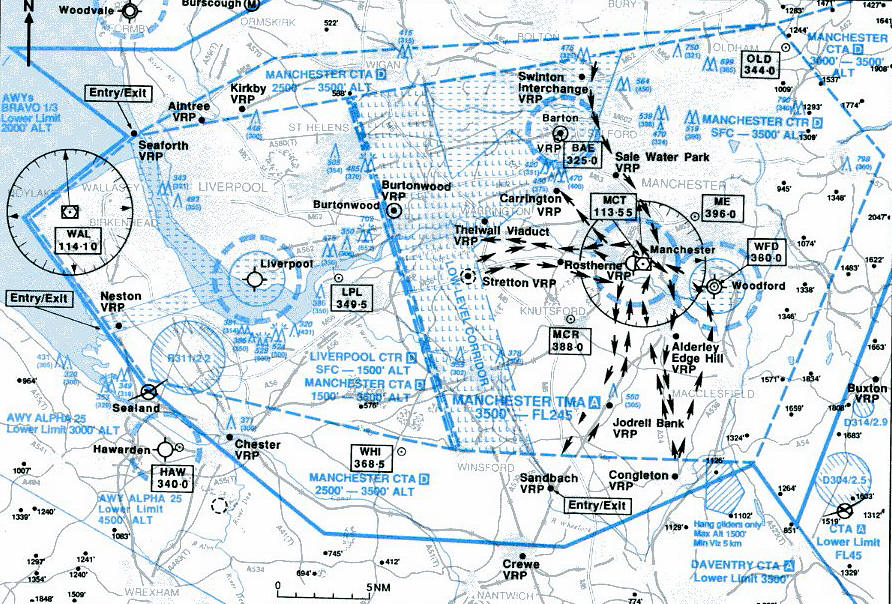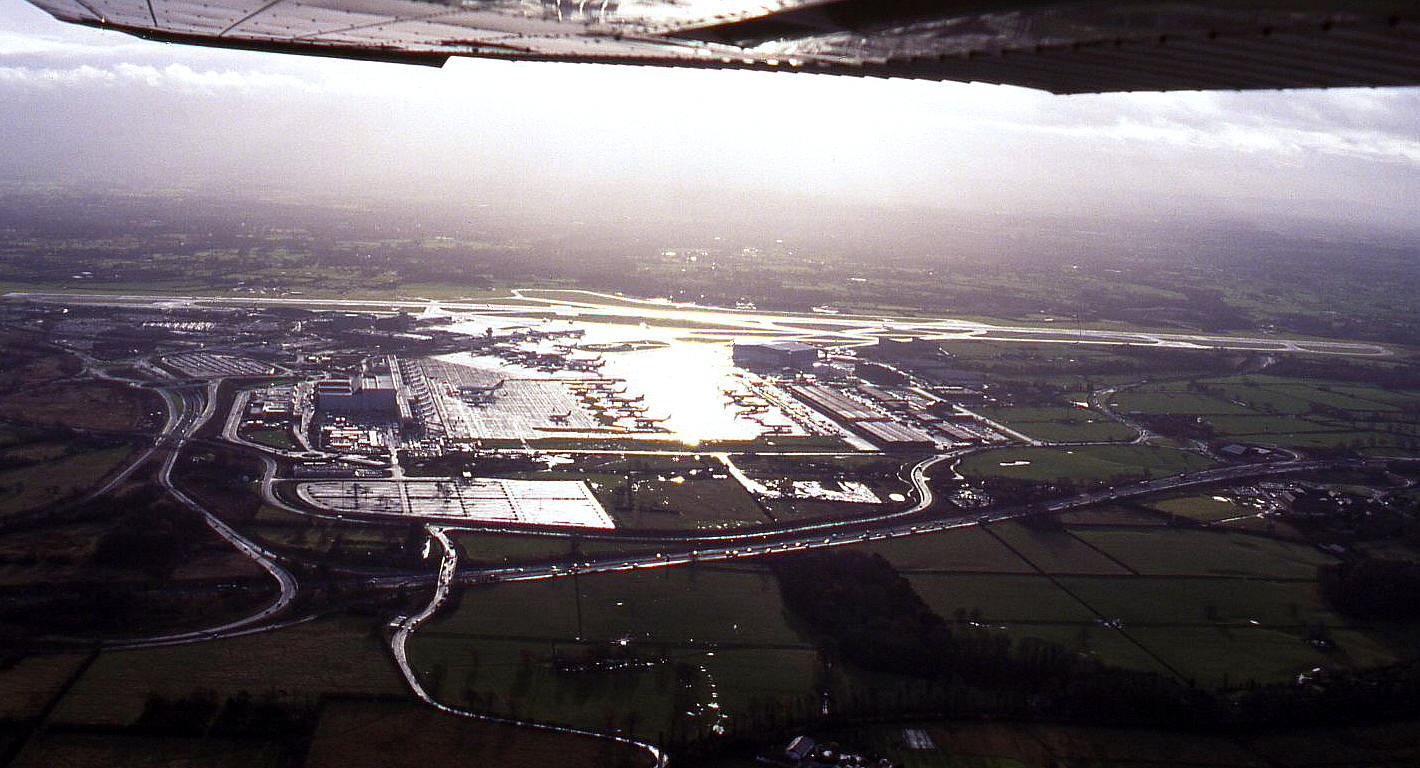Manchester Airport
RINGWAY: Civil airport known as RINGWAY, and later renamed MANCHESTER AIRPORT
Military use in WW2
Note: I am much indebted to Neil Maxwell who managed to identify this picture, which came from the John Stroud Collection. All other pictures are by the author unless specified.
ICAO code: EGCC IATA code: MAN
Operated by:
1965: Manchester Corporation
1990/2000: Manchester Airport plc
Activities: Airline, air cargo, charter, GA charter/air taxi, business, private, training and maintenance
British airline users: Pre 1939: Daimler Hire, Railway Air Services
Note: BARTON was the main airport for Manchester until RINGWAY opened in 1938.
Military use: Central Landing School (Parachuting)
Armstrong-Whitworth Whitleys mostly?
Note: I came across a mention that when impressed in WW2 the GAL Monospar G-ADPK, (initally given the serial X9348, but NTU - Not Taken Up) it crashed here on the 16th March 1940. After being rebuilt it was given the serial DR848. I mention this simply to illustrate that I now wonder how the RAF coped with such a multitude of various types being impressed. The whole regime must, without any doubt whatsover, have been deliberately orchestrated to diminish the effectiveness of the RAF to wage a war against Germany, and the Luftwaffe in particular of course.
And indeed, some seventy years on, the evidence to support this argument that many entrenched people in the RAF heirachy were deliberately sabotaging the effectiveness of the RAF seems to be building year on year. But of course, we really must be very wary of falling into the 'hindsight' trap. The basic fact being that nobody at that time had ever faced a war like this, and indeed far-sighted people such as Dowding and Parke had a difficult time advancing their ideas, and were soon dispensed with after the so called 'Battle of Britain' has been won.
RAF Fighter Command
613 Sqdn (North American P-51 Mustangs Mk.1)
The second picture is a scan from a postcard, simply titled 'Manchester International Airport' and no date information. On the back it states, "Photograph by kind permission of Manchester Airport" and the picture was taken by K L Price.
Today of course this a very interesting picture, mainly because it shows that GA aircraft were very much in evidence using the airport. This said it is difficult to date. The British Airways 757 seen taxying out to depart from runway 24 (only one runway in those days) wears the 'Landor' colour scheme which was applied from 1984 to 1997.
Post 1945: Air 2000, Air Anglia, Airlines (Jersey), Airviews, Air Europe, Air Kilroe, Airtours International, Air Southwest, Air UK, Air World (Envoy), Autair, BKS, Britannia Airways, British Airways (BA), British Caledonian Airways, British European Airways (BEA), British Island Airways, British Midland Airways, British Overseas Airways Corporation (BOAC), British United Airways, Business Air, Brymon Airways, Caledonian Airways, Cambrian Airways, Channel Airways, CityFlyer Express, Cunard Eagle, Dan-Air, Eagle Airways, European Aviation Air Charter (Eurocharter), Excalibur Airways, Excel Airways, Fingland, Flightline, Flybe, Flying Colours, G.B. Airways, Gill Aviation, Interline, Jersey Airlines, Jersey European Airways, Laker Airways, Leisure International Airways, Manx Airlines, Melba Airways, Monarch Airlines, Suckling Airways, Thomson-fly, Virgin Sun
Note: This picture is a scan of a postcard, presumably from the early 2000s?
Foreign airline users: Post 1945: Adria Airways, Aer Arran, Aer Lingus, Aeroflot, Air 2000 Airlines (Elite), Air Canada, Air Club International, Air Europa, Air Exports, Air France, Air Hong Kong, Air India, Air Littoral, Air Malta, Air Mauritius, Air Operations of Europe (Airops), Air Ukraine, Akdeniz Airlines, American Airlines, American Trans Air (Amtrans), Aviogenex, Balkan-Bulgarian Airlines, Base Regional Airlines (Coastrider), Canadian Pacific Airlines, Cathay Pacific Airways, Centennial Airlines (Cannon), Continental Airlines, Croatia Airlines, Cross Air, C.S.A. Ceskoslovenske Aerolinie, Cyprus Airways, Delta Airlines, Egypt Air, El Al Isreali Airlines, Emirates Airlines, EuroManx Airlines, Finnair, Futura, Gulf Air, Iberia, Intersun, Istanbul Airlines, KLM, Lauder Air, Lufthansa, Luxair, Maersk Air, Newair, Oasis International Airlines, Onur Air, Ryanair, Sabena, Singapore Airlines, Swissair
Aerial photography: Airviews
Note: In the 1957 'The Aeroplane' directory, Airviews were listed as providing "Pictorial air photography" with a fleet of three DH89A Dragon Rapides and an Auster. Clearly business was booming in those days. But, having been involved in aerial photography for a least a quarter of a century, I cannot imagine why using Dragon Rapides were favoured.
In the April 2020 edition of Light Aviation magazine Trevor Wilcock tells us that his first flight was in the Auster G-AGXN operated by Airviews in around 1951. "I was the fourth person in a three-seat aircraft, perched on a ledge behind the third seat."
Charter, air taxi: Post 1945: Aer Turas, Air Columbus, Air Condor, Air Ferry, Air Kilroe, Air Transport Charter, Airviews, Airwork, Britannia Airways, British Caledonian Airways, British Westpoint, Cabair, Caledonian Airways, Channel Airways, Derby Airways, Derby Aviation, Eagle Aviation, Euravia
Air cargo: Post 1945: Heavylift Cargo Airlines (Scheduled service) Hot Air
Car ferry: Post 1945: British United Air Ferries
Flying club/schools: Post 1945: JD Aviation, Manchester School of Flying, MSF Aviation, Ringway Aero Club
Note: In the 1957 The Aeroplane directory, the Ringway Aero Club are listed. Could anybody kindly offer more information?
Maintenance: Post 1945: Airwork
Other operators: 1980s +: Air Kilroe, Grosvenor Aviaion, Northern Executive Aviation, Ravenair
Location: 7.5 nm SW of Manchester
Period of operation: 1938 to present day
Note: These maps are reproduced with the kind permission of Pooleys Flight Equipment Ltd. Copyright Robert Pooley 2014.
Runways:
WW2: 06/24 1280x46 hard 02/20 1006x46 hard 10/28 914x46 hard
1965: 06/24 2286x46 hard 02/20 878x46 hard 10.28 853x46 hard
Note: The runway dimensions given on the map differ from those given in the text.
Pre 2001, (and in 1990 too) : 06/24 3048x46 hard
Post 2001: 06R/24L 3200x45 hard 06L/24R 3048x46 hard
Post 2009: 05R/23L 3200x45 hard 05L/23R 3048x46 hard
A MIKE CHARLTON GALLERY
Note: All this pictures from postcards were very kindly sent by Mike Charlton who has an amazing collection. See; www.aviationpostcard.co.uk
First picture. The control tower looks a bit delapidated, but presumably this relects the fact that it hadn't been maintained during WW2. Note the Eagle Airways 'Mayfair Class' Vickers VC.1 Viking. Eagle Airways, based initially at BLACKBUSHE (HAMPSHIRE) came into being in 1953 and operated until 1960 when it became Cunard-Eagle.
Second picture: This is all rather frustrating. I cannot discover when this very modest terminal was added to the control tower. Presumably circa 1950?
Third picture: It is probably difficult to explain the allure of aviation that somewhere like this had in those days. The photographer hadn't even bothered to hand around until an airliner arrived. But look at the amount of spectators gathered. Presumably not to just view the light aircraft on the apron, which looks like an Auster? Even after WW2, until the inclusive tour business really got into gear, travelling by air was very much the preserve of the well to do. And, they normally 'dressed up to the nines' for the occassion.
Fourth picture: As is so often claimed - a picture is worth a thousand words. Certainly proved here. I can find no information about this terminal, clearly much more substantial than the original terminal, but soon (or fairly soon?) to be superseded by the first of the really big 'modern' terminals. Note the tiny apron and no hard taxiways.
Fifth picture: Terminal One was opened in 1962. Note the generous spectator viewing area.
Seventh picture: I wonder if anybody can offer advice here? I have tried to identify the Italian Convair CV240 (?) and failed. The colour scheme certainly looks like Alitalia of the 1960s, but it has no insignia. Also, I cannot read the registration accurately and all options tried appear to reveal nothing. Beyond appears to be A Piper PA-28, probably a Cherokee? In the distance a BEA Viscount.
Ninth picture: What a fabulous picture. So much of interest but especially the Boeing 707 in the top right corner. Can anybody kindly give advice as to when this picture was taken? And indeed advice regarding the airliners seen in this picture.
Tenth picture: This picture was taken in the days when BEA were the main airline at MANCHESTER. The Vickers Vanguard served with BEA from December 1960 until June 1974.
Twelth picture: What an interesting picture. In full view is a Canadian Wardair Boeing 707, then a Dan Air Comet 4B, and a British Airways Boeing 757. But, what is that 'plain wrapper' Boeing 707 sticking its nose in?
Fourteenth picture: From left to right; two Britannia Airways Boeing 737s, a LAKER BAC One Eleven and, poking its nose in, a Dan-Air DH.106 Comet 4C. Regarding the latter, it appears that Dan Air operated a whopping forty-nine examples of the Comet between 1966 and 1976. Britannia Airways caused a bit of stir by insisting on buying new Boeing 737s when it was expected they'd purchase BAC One-Elevens. Plus, as an independent airline the likes of which had traditionally purchased second-hand airliners - these would be brand new.
I suspect, given the probable date of this picture, that these were Boeing 737-200 Series? As a bonus, we also see a Laker Airways BAC One-Eleven and they operated the 300 and 400 Series types.
Sixteenth picture. From left to right a British Airways BAC One-Eleven, then a Britannia Airways Boeing 737, an Air Europe Boeing 737 - and, what a joy, a Tupolev Tu-134 of the Yugoslavian Aviogenex based in Belgrade who started operating the type in 1969. However, a clue to when this picture was taken is that Air Europe started operations in 1979.
NOTES:
RINGWAY became the airport for Manchester in 1938, taking over from BARTON.
MILITARY OPERATIONS
In the summer of 1940 the No.1 Parachute Training School based here chose a modified Armstrong Whitworth Whitely II bomber to make some experimental drops exiting via the removed rear turret. Later the ventral turret was removed and this resulted with much more success. This operation, also known as the Central Landing School, was the embryonic start for what later became a fully fledged airborne force, using troops trained to parachute in advance of seaborne and land forces to establish bridgeheads and to secure landing sites etc.
These troops were highly trained and very proficient, but time and time again they were let down by a variety of circumstances whereby they had to rely on clearly incompetent people to plan their operations. And, they paid a very high price for this invariably utterly inept management. The classic cases being the invasion of the Greek island of Kos and Sicily, and especially of course Operation Market to secure the bridges at Arnhem in the Netherlands - 'A bridge too far".
THE FIRST LANCASTER
On the 9th January 1941 the first Lancaster bomber took off from here in the hands of H A “Bill” Thorn. The Lancaster being a four-engined development, (using Merlins), of the hugely unsuccessful twin-engine Manchester, largely due to problems with it’s twin Rolls-Royce Vulture engines.
ANOTHER DETAIL
In the 1950s Airwork did a lot of work on Canadair Sabres for the RAF.
AIRVIEWS
According to an entry in the 1957 edition of the 'The Aeroplane' directory, they operated passenger and freight private charters as well as a summer service in association with BEA (British European Airways) to Southampton and the Isle of Wight - but where on the Isle of Wight? The fleet consisted of three de Havilland DH89A Dragon Rapides and five Austers.
A PERSONAL MEMORY
In 1992 during our trip around British airports for Ian Allan on a joint book project, we took off on the 24th November from Birmingham at 14.25 in the Cessna 172 G-WACL to fly to Manchester. The weather forecast wasn't good, but it seemed quite reasonable for our purposes flying VFR. As so often happens in the UK, the weather forecast was completely wrong and passing Stoke-on Trent in torrential rain we were very glad that drivers on the M6 had their headlights on. Approaching Manchester and contacting ATC we were told to hold over Woodford, (the old Avro factory and airfield), to await a landing slot, and round and round we flew. The rain had ceased but it was obvious that the wind had increased far greater than forecast, and, due to the overcast, it really did appear to be almost night!
When we eventually received our landing clearance, the southerly winds were gusting up to 45 knots, way outside the limits given for a 172. But, the runway at Manchester is huge for a 172 and we decide to give it a go by flying alongside the northern edge of the runway and then turning a tad more into wind. Failing that we'd divert to Barton which had a runway more or less into wind. The turbulence was awful, I was really fighting to keep the aeroplane on a roughly even keel, and I suspect a gust pretty much halted our progress - we touched down just on the edge of the runway. Probably much to the amusement of ATC.
The next problem was trying to taxy to our allotted parking area by Air Kilroe. Being an ATPL Aussie kept berating me for not following the taxyway lines accurately, but I think he was inwardly laughing as it really was impossible, 'Charlie Lima' was weathercocking all over the apron. If you've ever seen an old film of Charlie Chaplin doing an impression of somebody hopelessly drunk, that was me that afternoon. But, we made it, and the people at Air Kilroe very generously invited us to park 'Charlie Lima' in their hangar.
Note: This chart is reproduced with the kind permission of Pooleys Flight Equipment Ltd. Copyright Robert Pooley 2014.
NAVIGATION
I do hope this chart is of interest. In the days when Manchester still allowed light aircraft to visit on a regular basis, and indeed still had a flying school based there, nevertheless strict procedures were in place and woe betide anybody getting it seriously wrong - and quite right too. This said, for a first time arrival, such us ours, it does require considerable attention. Fortunately for us, in those days I knew the area 'off by heart'
THE FOLLOWING MORNING
What a change. The storm had passed through and the wind had dropped leaving typically broken cumulus cloud which large patches of bright sunlight. Our chosen departure time coincided with a busy period so we had to wait quite a long time before a gap long enough for us to escape the risk of encountering wake turbulence came along. But for me it really was worth it.
It was the first time I had been, in a light aircraft, in a queue of airliners heading for the runway to take off. ATC very thoughtfully gave us our own holdig point, and, we did leave a long gap between us and the airliner in front as a 'gentle puff' from that airliner starting to moving again could easily have blown us away - quite literally. We took off and eagerly accepted an early 180º turn to the right as our next destination was HUMBERSIDE. It was quite fabulous to squint into the sun and see the rain soaked terminal area glowing. This said, finding a way through the mostly low cloud hanging over the Penines took a bit of work, but we did find a way through.
John Taylor
This comment was written on: 2015-08-04 21:10:13Hi. Ringway opened as the civil airport for Manchester in 1938, replacing Barton. It then became military with the onset of WW2. Kind regards John Taylor
Reply from Dick Flute:
Many thanks John. I shall make an amendment right now. Best regards, Dick
We'd love to hear from you, so please scroll down to leave a comment!
Leave a comment ...
Copyright (c) UK Airfield Guide














